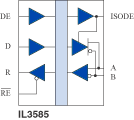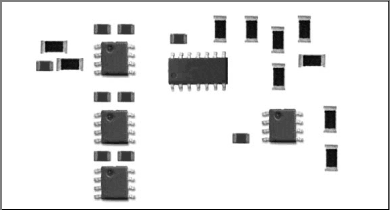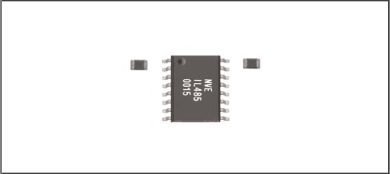|
“Scotland the Brave” is our current telephone system background music, in honor of the SPE Exhibition in Scotland (see story at right). |
|
|
|
NVE will be closed Monday, September 5 for Labor Day. |
|
|
|
|
|
 |
|
|
Featured Product |
|
|
IL3585 Isolated Transceiver
 The IL3585 is NVE’s flagship transceiver—a galvanically isolated, high-speed differential bus
transceiver, designed for bidirectional data communication on
balanced transmission lines. The IL3585 is NVE’s flagship transceiver—a galvanically isolated, high-speed differential bus
transceiver, designed for bidirectional data communication on
balanced transmission lines.
Patented
IsoLoop spintronic Giant Magnetoresistance (GMR) technology makes these devices unique.
On the input side, the IL3585 is compatible with 3.3 V input
supplies, allowing interface to standard microcontrollers without
additional level shifting. On the bus side, the IL3585 delivers an exceptional 2.3 V differential output into a
54 ohm load over a bus supply range of 4.5 V to 5.5 V. This provides
better data integrity over longer cable lengths, even at data rates as
high as 40 Mbps.
Current limiting and thermal shutdown features protect against
output short circuits and bus contention that may cause excessive
power dissipation. Receiver inputs feature a “fail-safe if open”
design, ensuring a logic high R-output if A/B are floating.
Features
• 40 Mbps Data Rate
• 5 ns Pulse Skew
• 3.3 V / 5 V Input Supply
• Low EMC Footprint
• 15 kV bus ESD Protection
• Thermal Shutdown Protection
• Unlimited Barrier Life
• Meets or Exceeds ANSI RS-485 and ISO 8482:1987(E)
• UL1577 and IEC 61010-2001 Approved
• 16-pin SOIC Package
Applications
• Industrial Control and Factory Automation
• Building Environmental Controls
• Transportation Systems
• Security Networks
<Download Datasheet>
<Illustrative Circuits>

|
|
 |
|
|
Upcoming Exhibitions |
|
|
IsoLoop distributor Rhopoint Components
will be exhibiting at the SPE 2011 Offshore and Gas Exhibition, September 6 to 8 in Aberdeen, Scotland. NVE T-Series High-Temperature Isolators operate at 125°C with no derating, and have been proven in the toughest downhole requirements.
|
|
 |
|
|
Labor Day Application Corner |
|
|
Labor-Saving Single-Chip
Isolated Transceivers
Labor Day is the perfect time to reduce design and manufacturing labor with isolated transceivers.
Isolated serial interfaces are often required for safety, and can improve data reliability by eliminating ground loops.
Conventional opto-isolated RS-485 circuits need separate transceiver and isolator chips. A Schmitt trigger is also required to condition slow slew rate opto-isolator edges before the transceiver. These design considerations mean a high component count board:
 High labor content with a conventional isolated RS-485 circuit.
High labor content with a conventional isolated RS-485 circuit.
Single-chip isolated RS-485 transceivers dramatically reduce chip count. As shown in the layout below, all that’s required are a isolated transceiver chip and two power supply decoupling capacitors:
 Isolated RS-485 chip cuts design and manufacturing labor.
Isolated RS-485 chip cuts design and manufacturing labor.
Bus termination resistors can be added to maximize speed and transmission length by reducing reflections, although they may not be necessary. Fail-safe resistors can also be added to ensure a known bus state with no active transceivers.
For more tips on making RS-485 systems work, watch our new video:
Isolated transceivers are available in a variety of configurations, including RS-422, RS-485, RS-485W, and PROFIBUS, with various speeds, bus loads, and input types. Packages as small as 0.15"-wide SOICs are available.
 |
|
|

